Tindal Street Public Houses
Location of board
Tindal Street, outside wall of Boots
About
After the year 1218, Chelmsford was the county town. It held an annual fair, a weekly market and was home to the Assize courts of Essex where the king's judicial business was carried out. During such times, Chelmsford became host to great hordes of people that swarmed the town.

In 1591, a survey highlighted the town's setting as 'a greate thorowefare' as one of its distinctive features. Its central position in the shire, on the road from London to Colchester, Harwich, and Ipswich, meant that Chelmsford was a place where the main through traffic of Essex would pass. This presented the opportunity for cooks, brewers and hostelers to offer food, drink and lodging to weary travellers seeking respite.
As centuries passed, ale houses and inns sprang up around Chelmsford to cater for the arrival of travellers passing through. By the 17th century, Chelmsford was rich in picturesque inns, with many public houses established along the High Street and its surrounds.
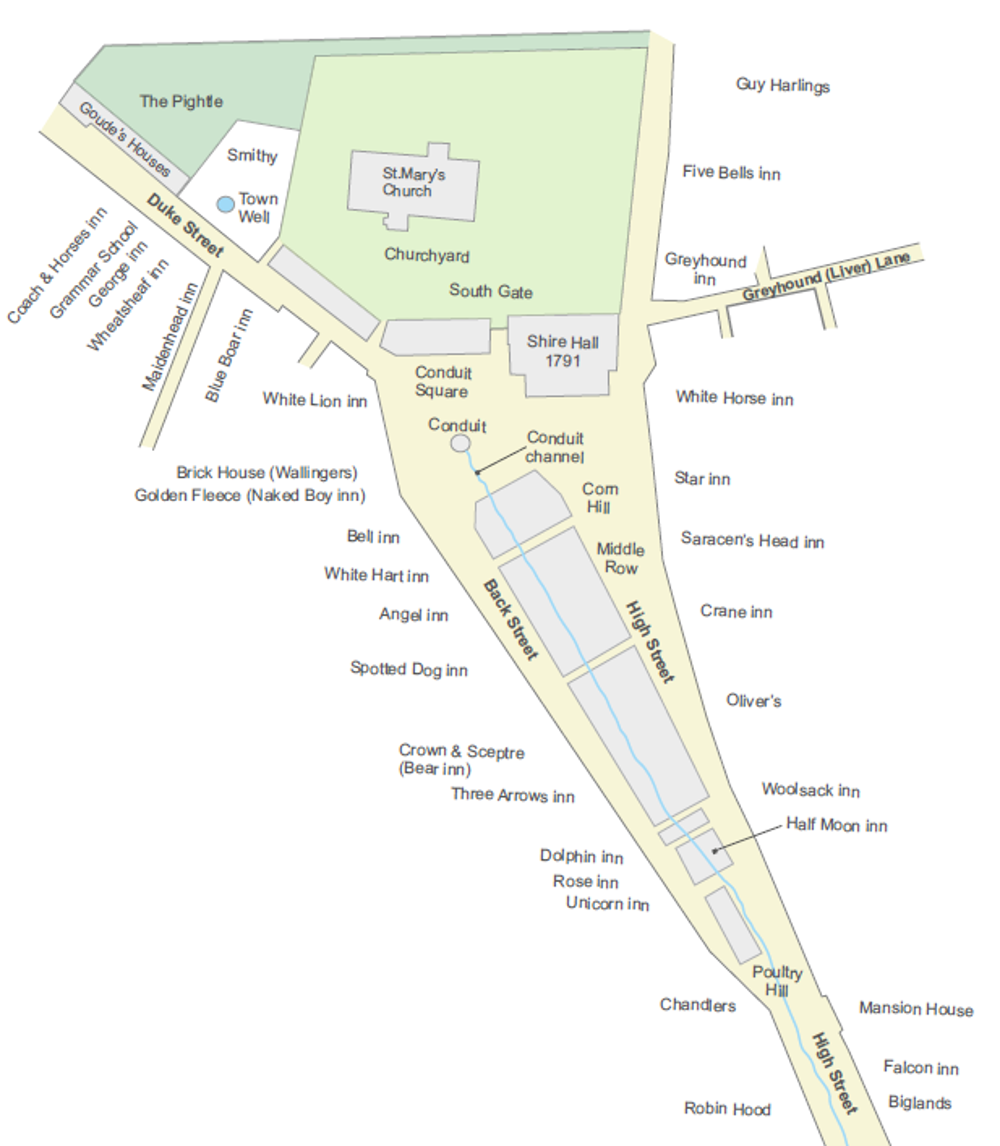
The Bell Inn
The site was originally owned by John Gyban in 1381 and was an ancient inn on the west side of the market place, facing the conduit and Cross building. It was known in the 1500s as the Blue Bell Inn before becoming the more familiar Bell Inn Hotel in the 1800s.
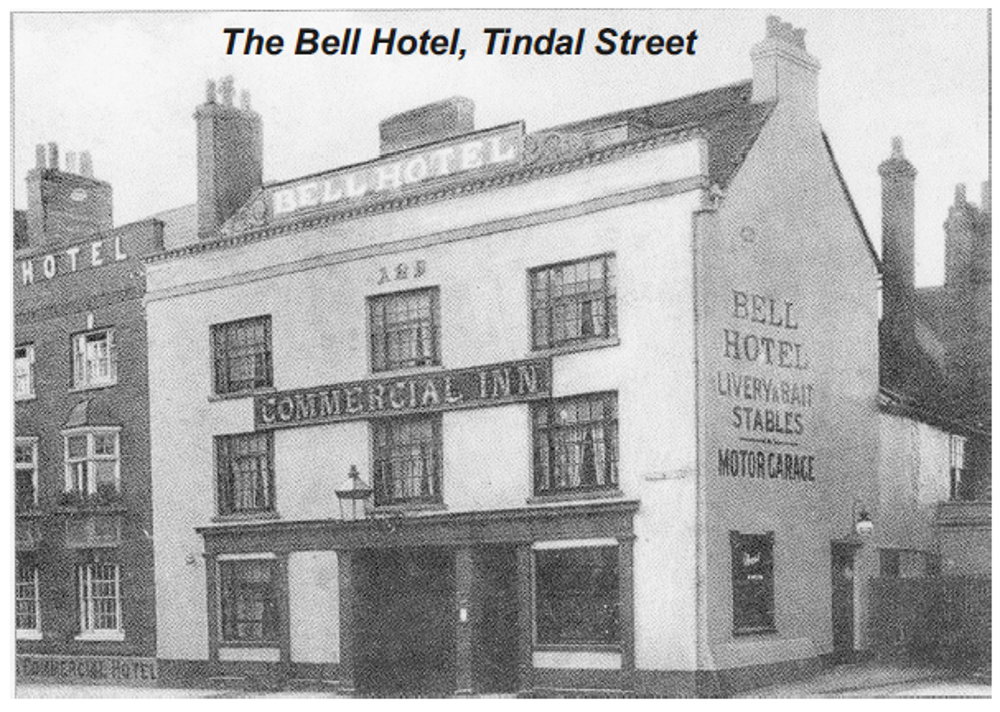
In 1651, its landlord, Michael Stuck, applied to the magistrates for a wine license. He described the inn as the 'most convenient and fittest inn to receive and refresh [the chief gentry of the county attending assizes and sessions] …being situated so near the Shire House.' Because of its proximity to the courts, in 1757 the magistrates also determined that the Bell Inn, with some additional plots either side, would be the most convenient site for a new county gaol. However, this proposal never came to fruition, due to the reluctance of the innkeeper to cooperate with the sale.
The building had twelve hearths, as well as an extensive yard to its rear, as many of the inns and public houses along Back Street did. The yard and hotel were eventually demolished in 1948 (much earlier than the rest of Tindal Street) to make way for an open public market space next to the Corn Exchange.
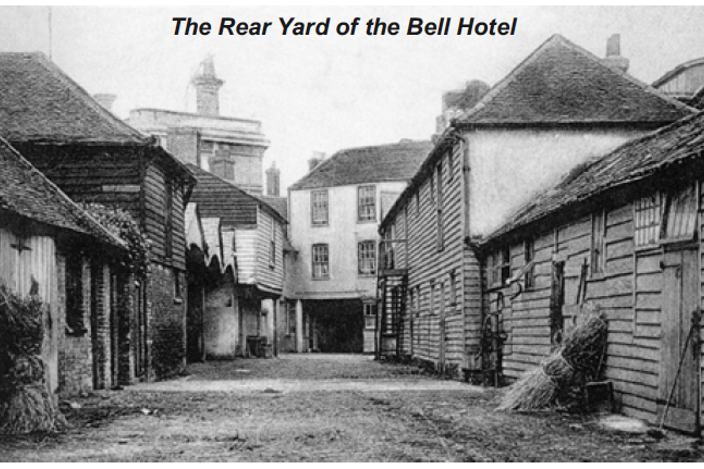
The White Hart Hotel (27 Tindal Street)
There were modest brewing businesses in Chelmsford associated with public houses, including the Black Boy on the corner of Springfield Road and the High Street. The largest of which was the White Hart on Tindal Street.
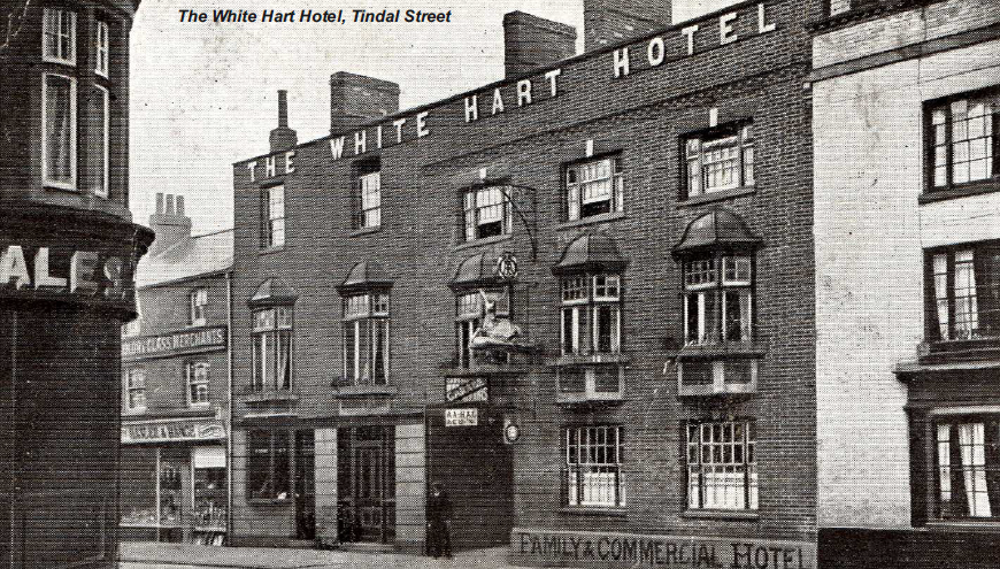
Recorded as an inn in 1570, the White Hart was originally owned together with the private residence of Richard Marion next door called 'The Heath', which later became 'The Angel' public house. The adjoining inns were later owned by John Wallinger and his family, who lived in a mansion on the site of the former Corn Exchange, facing the Conduit. Wallinger was the head of a family established in the town since the fourteenth century. He was an attorney, clerk of the peace and leader of the parish between 1614 and 1640.
In 1815, the inn was enlarged by obtaining the adjoining shop. By 1855, a domestic brewery named 'The Tonic Ale Brewery' was founded at the White Hart by Andrew Durrant. Brewing ceased in 1897 when another brewing company, Ind Coope of Romford, purchased the property and it became an Ind Coope public house by 1899.
The Spotted Dog Inn (24 Tindal Street)
The Spotted Dog Inn was a fine example of one of the many coaching inns within Chelmsford, with others including the Black Boy Inn and the King's Head, which were located on the High Street. In 1600, it was listed as a public house called The Talbot and was owned by the Bird family.
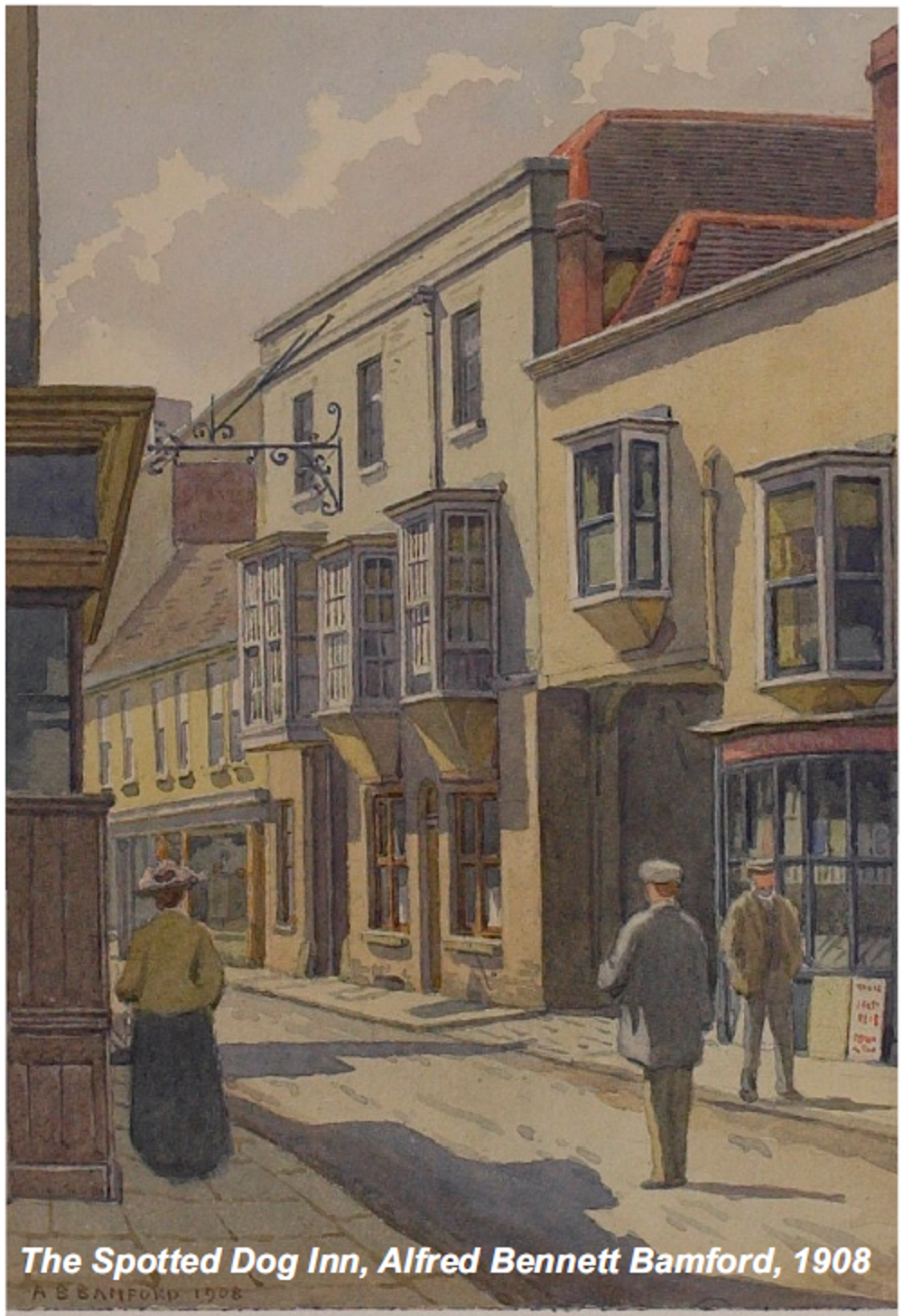
It was thought to be fifteenth century in parts, with original crownpost roof trusses and in the 17th century, its Hearth Tax was 7. In 1921, it was identified by the Royal Commission on Historical Monuments as a timber-framed building worthy of preservation.
Despite this recommendation, The Spotted Dog was unfortunately demolished in the 1960s, along with the rest of the buildings located on the west side of Tindal Street, to make way for a new shopping precinct in its place.
A Tale of Tragedy
Sited on the west side of Tindal Street, the inn provided stabling for horses at the back of the property. Tragedy struck The Spotted Dog Inn in the 17th century, when a fire occurred within its stable blocks, killing 13 German soldiers.
On the night of 22 October 1804, a troop of 70 Hanoverian soldiers had arrived in Chelmsford en route during the Napoleonic Wars. Accommodation in the town had been scarce for the new arrivals, so they found lodgings in the stables at the Spotted Dog Inn.
Before they went to sleep, the soldiers started smoking as they settled in the straw for the night, but the sparks from their clay pipes soon ignited the straw, which they speedily had to extinguish.
Late that night, however, the soldiers woke up to find the stables fiercely blazing from a ferocious fire. Ignorant to the latch of the stable door, the soldiers found that they couldn't escape to the outside. Help eventually came to release the troops, but not until 13 of them had perished in the fire.
The verdict was “accidental death” as funeral preparations began. On the day of the burials, hundreds of troops that had been billeted in the town lined the streets with reversed arms, and a military procession passed through them in memory of the soldiers. The 13 coffins were buried in one grave within the churchyard behind Shire Hall where their resting place remains to this day.
The Dolphin Inn (14 Tindal Street)
The Dolphin was a timber framed building made from of old ship's timbers. It was first mentioned in the 16th century and was shown on the 1591 John Walker map as a medieval inn.
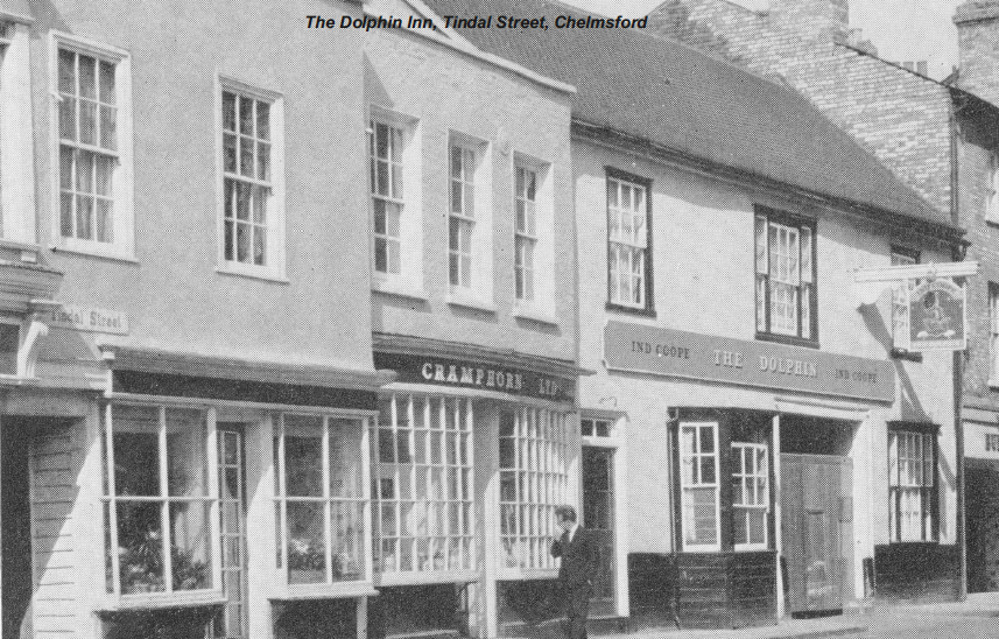
In contemporary times, many of these ancient buildings unfortunately fell into varying stages of dilapidation throughout the town. Most of these were situated behind Middle Row, in Back Street and its insalubrious back yards and one example of a premises unfit to continue was the Dolphin Inn.
Its condition came to light in the 18th century, during legal proceedings made by the licensee, John Wickman, against Ann Westley, who failed to carry out repairs to the building as its owner. Evidence was presented and witnesses were called to showcase the inn's poor condition. The outcome of the case is unknown. Whatever the conclusion, the inn continued in business and was an Ind Coope public house on the day that it closed, in 1969.
Half Moon Inn (82 High Street)
From 1593, the corner of Tindal Street, as it merged into New Bridge Street (now New London Road), was occupied by seven fish stalls (four of them held by the manor of Chelmsford), three saltbins and a leather market. Throughout the 17th century, the open market stalls progressively combined and were built upon, until 1703 when the property was transformed into the Half Moon Inn.
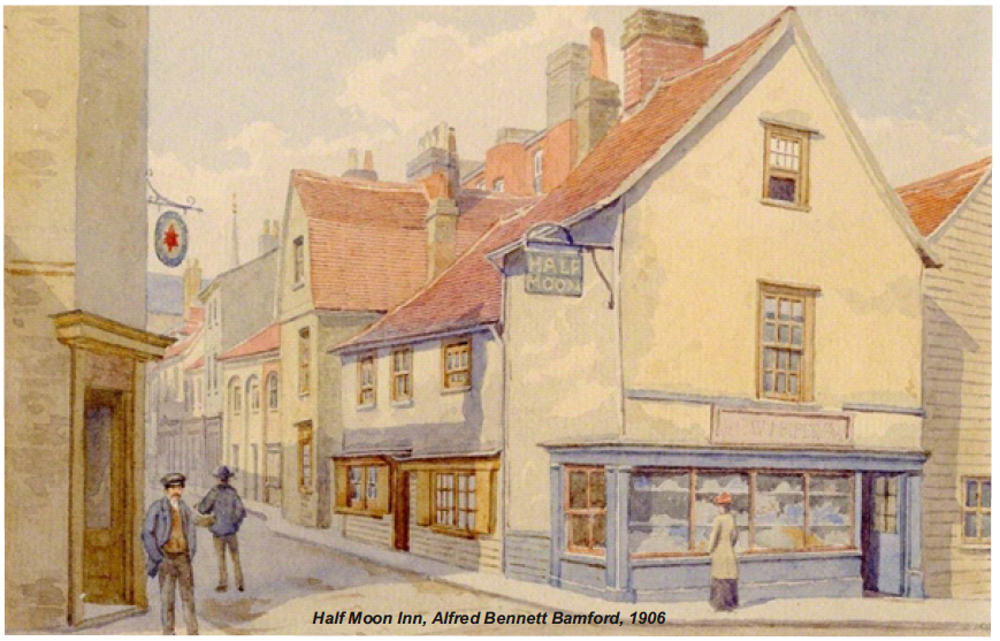
At that time, the conduit stream flowed under the property, via a gutter, on its way from Tindal Square to Springfield Road and into the River Can. The licensee of the inn was one Jeremiah Ginn.
In 1856, part of the inn was pulled down to widen the New Bridge Street entrance into the High Street, and by 1906, the inn building had been converted into shops. One of these was Peacheys, a sweet shop and greengrocers. The shops survived until 1937, when they were purchased by the Borough Council and demolished to make way for a road junction improvement scheme.
The public space that now occupies this area on the High Street is named Half Moon Square to commemorate the inn that once stood there.
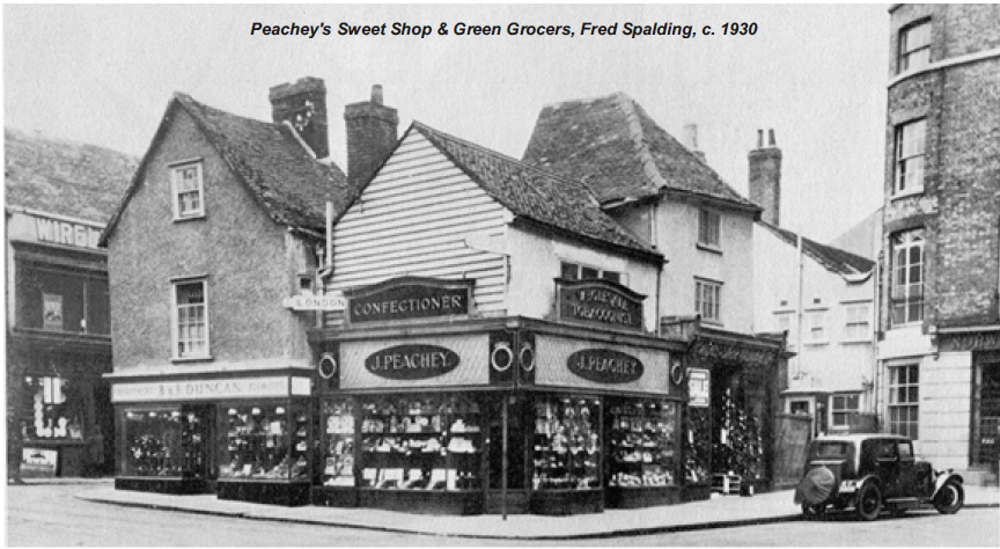
Conclusion
With original buildings dating back to the 1380s, Tindal Street, then known as Back Street and later Conduit Street, thrived because of the numerous public houses located along its sides. At one time in its history, every building on the west side had been a public house. And by the late 17th century, Tindal Street had some eleven of these premises alone, compared to seven on the corresponding length of the High Street.
The inns were a defining feature of Tindal Street and have been a much-missed part of Chelmsford's history in the years since their demise. Although many of the inns and public houses were demolished to make way for the construction of High Chelmer in the early 1970s, one pub remained on the eastern side of Tindal Street until its closure in 2017.
Images of the Bell Hotel, White Hart Hotel, Dolphin, Spotted Dog and Half Moon inns have been reproduced by courtesy of Chelmsford Museum. The map of the road from London to Harwich has been reproduced by courtesy of Library of Virginia, USA.
